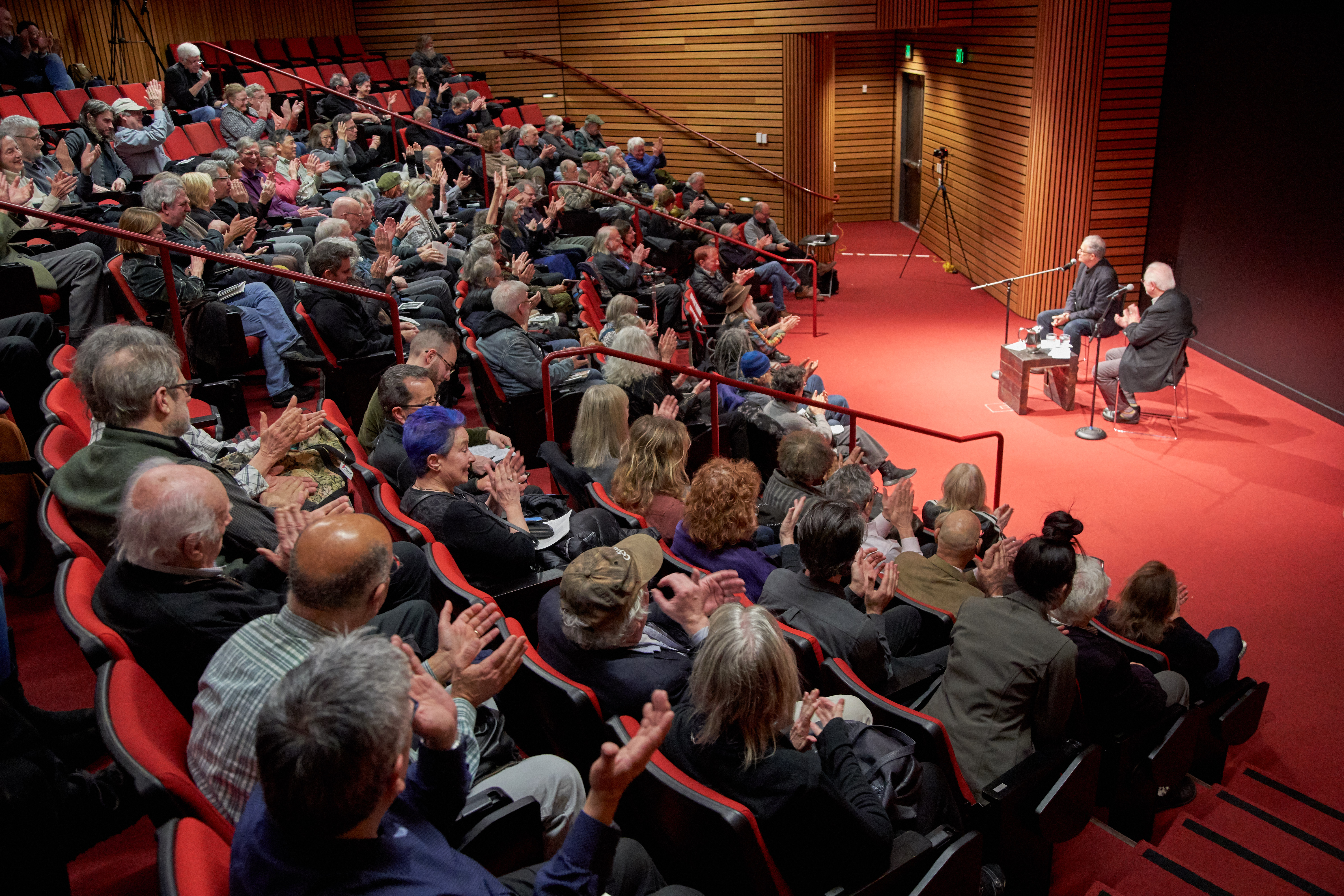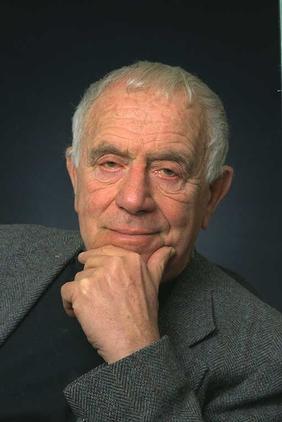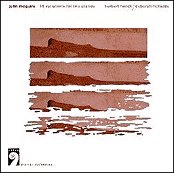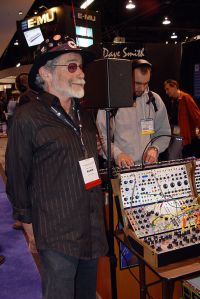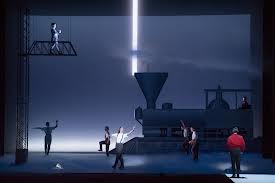
The fanciful subtitle of this release, “The Dance” is a follow up to the first volume titled, “In Nature” (a third volume titled, “At Play” is due out in March, 2023). These vague titles are fanciful and more connotative than specific. They seem to reflect the nature of the project and the nature of Sarah Cahill‘s style of conceptualizing what must be an overwhelming undertaking, Beginning with the simple concept of female composers (the term “neglected” would be redundant here) Cahill has produced a sweeping survey ranging from the baroque era (the earliest piece so far in this anthology is from 1687) to the present and her survey seems to know few geographical boundaries in this representative survey of keyboard music. Of course we are talking about basically the paradigm of western classical music but non-western influences are of course included via the composers’ individual talents. Many of these works were presented in Cahill’s fine YouTube series which can give listeners further clues to the pianist’s varied interests.
The cover art (which I had described as “drab” in the first review) now seems to aptly reflect the struggle for equality and now nicely represents this project in an iconic way with the same monochrome cover photo on each of the three volumes and a primary color panel with the disc title. Green for Volume I, Yellow for Volume II (I’m guessing “red” for Vol III?). This survey is shaping up to be an influential as well as hugely entertaining anthology.

What struck this listener is Cahill’s facility with both technique and interpretation of a mighty diverse set of pieces. Known primarily for her work with music written after 1950, she demonstrates in these recordings an impressive command of baroque, classical, romantic, and modern idioms. I have never heard her play Bach but I wouldn’t miss an opportunity to hear her do the Goldberg Variations.
This was particularly striking in her reading of the keyboard suite that opens this release. This is apparently not the first recording of Elisabeth JACQUET DE LA GUERRE‘s (1665-1729) Suite no. 1 in d minor (the complete suites for harpsichord were recorded by harpsichordist Carol Cerasi in 1998) but Cahill seems to channel the spirits of the pioneering efforts of Wanda Landowska and Rosalyn Tureck whose abilities to play harpsichord music effectively on the modern piano helped set the standard for this practice in the twentieth century and beyond. This late French baroque suite is a thoroughly engaging way to draw the listener in. With echoes of Bach and Couperin this virtually unknown composer is seriously engaging and substantive. This recording includes five (of nine) movements of the suite. One hopes to hear more of this woman’s music and Cahill is very much up to the task of providing a definitive performance.
With the next track we hear the music of Clara SCHUMANN (1819-1896), better known as the wife of Robert Schumann (1810-1856). Clara was in fact a highly accomplished virtuoso and composer whose works are only now getting the recognition they deserve. The piece chosen here is her Variations on a Theme of Robert Schumann Op. 20. These seven variations were a gift for her husband on his 43rd birthday in 1853. Sadly it was to be the last birthday he would celebrate with his family. Robert Schumann was infamously institutionalized in 1854 and died in 1856. The work has all the splendor of high romanticism with the virtuosity associated with the great composer/pianists (Brahms, Schumann, Liszt, Rubinstein, et al). And, as with the previous piece, Cahill seems very at home in her reading of this wonderful set of variations.
Germaine TAILLEFERE (1892-1983) is next up with her three movement partita of 1957. The title “Partita” suggests a connection with the baroque suite which opens this collection. The connection is one of form, not harmony or melody. The three movements here are “Perpetuum Mobile”, “Notturno”, and “Allegramente”. Taillefere, who is perhaps best known for her lively Harp Concertino of 1927, was the only female member of France’s celebrated “Les Six” (the other members were, Louis Durey, Georges Auric, Arthur Honneger, Darius Milhaud, and Francis Poulenc). This largely neoclassical group of composers developed their styles in the shadow of Debussy and Ravel. Cahill’s first album was a fine reading of Ravel’s piano music and she is very much in her element with this delightful three movement work which echoes Ravel to some degree,
Zenobia POWELL PERRY (1908-2004) is the first composer in this collection to be born in the twentieth century. She was a black composer/conductor/pianist and teacher. Her work appeared before in this blog in coverage of her opera “Tarawa House” which was given a revival in Modesto, CA in 2014. Her “Rhapsody” (1960) is in a sort of Neo-romantic style with some challenging virtuosity required. This is a fine introduction to her work which deserves serious reassessment and more performances. Musicologist Jeannie Gayle Pool continues to publish, preserve, and advocate for this neglected American artist. Pool maintains the website for this composer and is a useful, informative site,
Madeleine DRING (1923-1977), a British composer/pianist, a new name to this writer, is characterized by her use of popular and jazz idioms. Cahill here plays two (of five) movements of her “Color Suite” (1963). This whets the listener’s appetite for more of this interesting composer whose work was well known during her career but whose star has dimmed since her passing. Dring is one of many women composers of that era whose work, though influential, has not been incorporated into the repertory of contemporary classical musicians.
Betsy JOLAS (1926- ), a French born American composer whose career has included work as a composer, pianist, and teacher. No stranger to the Bay Area, Jolas taught at UC Berkeley and Mills College as well as Harvard and Yale. The listener accessible nature of her music belies the innovation and complexities it contains. Though she has been recognized throughout her career her work is due for a new reckoning. Her brief “Tango Si” (1984) is entertaining and sufficiently compelling to spark interest in her work going forward.
Elena KATS-CHERNIN (1957- ) hails from Uzbekistan and migrated to Australia where she studied at the New South Wales Conservatorium and subsequently with Helmut Lachenmann in Germany. Kats-Chernin has been a prolific composer and is now perhaps mid-career and, happily, pretty well known. “Peggy’s Rag” (1996) is one of a set of several rags written between 1995 and 1999. This work is dedicated to Australian composer Peggy Glanville-Hicks (1912-1990), another artist, another female composer deserving of a revival.
Meredith MONK (1942- ) has long been one of this reviewer’s favorite “downtown” composers whose initial musical ventures were first heard in her New York SOHO loft. She, along with other rising stars, including Philip Glass, Steve Reich, Phill Klein, Rhys Chatham, etc., are now the historically recognized mavericks who’s creative ideas formed in contrast to the power elite of the “uptown” composers heard commonly at Lincoln Center.
Monk was initially trained as a dancer and that has been evident in most of her output. But she is perhaps best known for her exploration of extended vocal techniques (which she also teaches). It is fitting that her “St. Petersburg Waltz” (1997) is included in this dance themed installment of music by women composers. Despite being an “east coast” composer initially, Monk has achieved international recognition and has a particularly large following in the Bay Area. No surprise then that our pianist guide in this journey has a long standing familiarity with Monk’s work. Cahill demonstrates her grasp of Monk’s minimalist inflected style most admirably and, as in the preceding tracks, leaves the listener wanting more.
Gabriela ORTIZ (1964) is a Mexican composer. Born in Mexico, trained in England, and now teaching in Mexico. Her light shines brightly even in the glare of the heavily politicized immigration issues that dominate the media and is another in a long line of world class composers from that underrated country. Ortiz, in addition to her academic appointments, has produced a large number of works in multiple formats from piano and chamber music, to orchestral, dance, and opera. Her work draws in part on the folk music traditions she absorbed in her childhood and she has amassed a significant number of international commissions and recordings.
Ortiz is also an accomplished pianist and the work chosen here is “Preludio y Estudio No. 3″(2011), one of four two part compositions. Cahill’s brief but useful notes provide the listener with her personal insights to the underlying complexities that drive this music. The incorporation of folk and non-classical elements has been embraced by composers for hundreds of years and Ortiz succeeds in incorporating such elements into her personal style,. As with all of these works, Cahill produces interpretations that, if not absolutely definitive (there are always detractors) stand as a challenge to subsequent interpreters, a necessary element in such a grand project.
This volume ends with the most recently composed work by the youngest composer of the lot, Theresa WONG (1976- ). Wong, a graduate of Mills College, is cherished performer in the Bay Area and beyond, As both composer and performer she has maintained an active schedule and has produced a great deal of music documented in a large and growing discography. Her collaborations have included many of the established Bay Area artistic royalty (including Ms. Cahill, of course).
“She Dances Naked Under the Palm Trees” (2019) is a composition for which the backstory (provided in Cahill’s notes) is particularly useful for the listener. It is the incorporation of extramusical ideas and musical. quotation that drive the drama here to some extent.. The music certainly stands on its own but the addition of the technical insights will send the listener back for repeated hearings and the music will guide the listener to seek more of the work of this wonderful artist whose star continues to rise.
The last disc in this landmark anthology (due next year) will ultimately contain only a portion of the approximately 70 pieces which Cahill has chosen. Like her previous anthology (of politically influenced music) “A Sweeter Music” released in 2013, the limitations of time and money prevent a more complete vision of said anthologist but there is more than enough to provoke further interest by listeners and artists and isn’t that the point?




